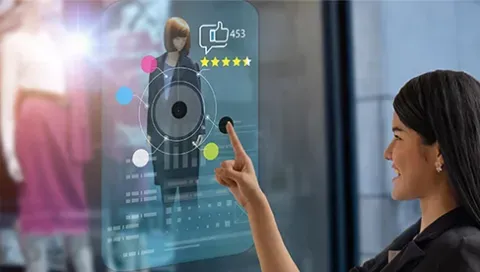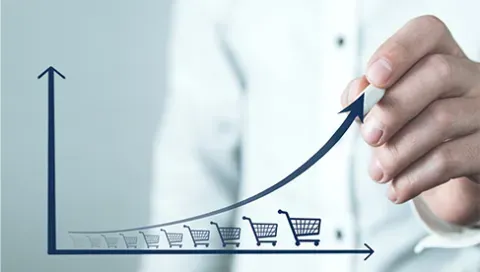The pandemic has brought the global market to its knees. Most particularly it served as a wake-up call for the logistics industry. Quick adoptions, revisited strategies, and resilient solutions, these are some of the terms that are echoing through warehouse businesses.
To dig deeper into the segment of supply chain and logistics and understand how technology adoption is driving change in the industry, Cybage hosted an intriguing video podcast titled, Warehousing in COVID Times- Operational Resilience & Recovery in New Normal. It was attended by industry stalwarts like Randy Brown, Sr. Vice President of WareHouse & Logistics at Binzagr Company, Jill Yan Jiang Product Manager, Warehousing, Distribution, Technology at Maersk, and Jamie Sterling, Director, International Sales at Körber Supply Chain Software.
These experts brought global insights on how the logistics industry dealt with the impacts of pandemic in warehousing.
Excerpts from the video podcast.
What were some of the challenges you faced to balance out surge in demand and lack of adequate supply from manufacturers?
Randy—
This was an unprecedented event. And there was no reference available, so we had to go creating as we went along. The situation was not just dynamic, but it was changing rapidly. We quickly moved from a replenishment program into an on-demand program, and that changed the distribution of the product in our network. We started working very closely with domestic suppliers to ensure that we increased production of the products that were in high demand. We constantly worked on increasing our inventory holdings with them. But when it came to international suppliers, it was very difficult because of the long lead time. However, we stabilized the situation by dipping into our safety stocks first. This gave us the lead to get more products in that resulted in an undisrupted supply chain. In no time we were able to fine-tune according to the situation and be extremely supportive of our customers through channelized distribution.
How did lack of movement impact warehousing operations, and which prediction mechanism is being used to expediate the orders?
Jill—
With the nature of the pandemic, we experienced a slowdown in volume exports. Lifestyle products are one of our strongest product offerings. But many of our customers had halted their exports by end of March. They eventually reopened and since have been pushing volume out of China and Asia. Due to this fluctuation, there was a storage overflow in some of the warehouses, mostly in Asia and significantly in China and Vietnam. But the transactions dramatically dropped. There was around 30 shipment volume reduction for the warehouses. However, there was about 6% storage increase reported in April and May compared to last year. In terms of the prediction, we observed that the new demand fluctuation posed as a challenge for our customers in providing an accurate focus on the volume. However, there was an increasing need for slow cargo export and storage. We are proactively reaching out and establishing regular contact with our customers. We believe this is the right time to stand out and leave the value mark being a global container logistics leader with partnership-oriented solutions.
Did the lockdown impact ongoing implementations, and what mechanisms were adopted to perform UAT and GO Live supports during lockdown phase?
Jamie—
Our company has a lot of remote employees, so we’ve had the infrastructure in place to continue working. However, for a lot of our customers who didn’t have that infrastructure in place didn’t know what to do. A lot of our projects were immediately put on hold. Site visits were barred due to health mandates. On the brighter side, this situation pushed a lot of businesses to analyze their processes and bring in infrastructure for uninterrupted workflow. Our customers quickly adopted new technologies and sprang back to action. This also meant that we were able to complete our project implementations. As of date, things have become even more productive, and we were able to complete all the projects remotely.
What are some of the emerging technology trends that Warehouse Managers need to evaluate and adopt?
Jill—
Business and technology cannot be pulled apart. There needs to be a unified solution that can be offered to customers. The digital offering should be able to support other planning or inventory management. The digital landscape design should be able to support the purpose of innovation and scalability of new technologies like the API for integration, the data analytics for the visibility or the robotics for the automation. Digital solutions should be on the top of WMS functionality and stability. Internal technology platforms should be leveraged to form the end-to-end supply chain digitization. Our concept is that the platform should be built upon a variety of modern technologies and not just support the day-to-day business but also utilize data for planning and predicting trends.
What are some of the features required in the 3PL software industry to maintain a competitive edge post COVID-19?
Randy—
There are a couple of things that would prove to be beneficial, one of which is end-to-end visibility. However, there are a whole lot of things that are needed to be done in order to achieve it. Visibility is almost like a silver bullet in the supply chain. If it is achieved, we can internally merge our TMS or WMS. In current times, we want to have a platform that gives us full visibility internally of everything that happens. Right from when a product comes into our facility to when it leaves. Moreover, if this platform can give us industry insights to benchmark our operations it would be helpful operational wise and to maintain a competitive edge. Another feature that would be helpful is something that would help us serve our customers faster and yet keep costs in check. It is high time that we settle for technology that reduces human errors and increases efficiency.
With current uncertain times, why is supply chain visibility a major concern?
Jamie—
There are two challenges when it comes to end-to-end visibility. The first being end-to-end adoption and the second being the fundamental cost of it. To bring in this visibility everyone, right from the manufacturer to the consumer, there must be a certain level of willingness to adopt. Moreover, the question often asked is what would the cost be and who will bear it? There is a suite of products that are now available in the market. These range from WMSs, TMSs, WCSs, and simulation software. All of this sits on a common “user experience” platform. Everything is an integrated package when it comes to these internal products, making visibility possible. But the main challenge arises while dealing with external products. So how do we facilitate those integrations? How do we provide that visibility within there? An interesting data point that we learned during a survey suggested that out of the 600 businesses that participated, 30% of them were still using manual processes for business operations. We deduced that these manual processes lead to broken visibility. These processes are far from capturing available data which leads to visibility issues.














